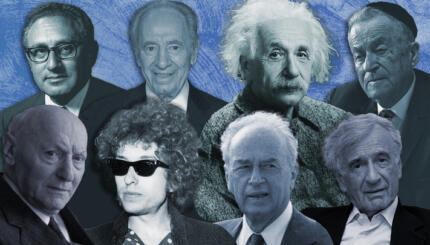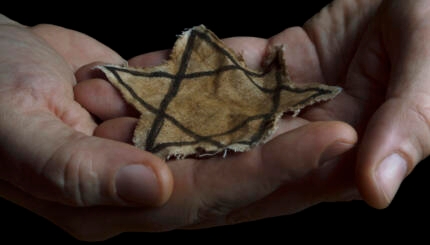Already during the war years, and under the shadow of Nazism, Jewish women gave narrative form to their experiences, writing wartime diaries and journals.
Diaries offer a unique perspective on the events of the Holocaust. Much more strongly than memoirs whose authors have survived Nazi atrocity and were able to supplement their subjective knowledge of the Holocaust with more expansive information, diarists convey the chaos and confusion of the time, the lack of reliable information and the hope–most frequently in vain–that the writer and her family would survive the war. The retrospective lens of memoirs dictates a selectivity of remembered events, while diaries often include material that might later be forgotten or discounted as irrelevant.
The process of giving written form to memory in the form of memoirs began almost immediately after the war, and continues into the twenty-first century. Capturing both individual and collective experiences, narrating events from a subjective and of necessity limited standpoint, memoirs about the Holocaust occupy a space between imaginative literature and history. Women’s memoirs provide details about lived experience during the Holocaust, the inner lives of the women who wrote them, remembered accounts of others who perished and the workings of traumatic memory.
Memoirs
Early memoirs, such as those by Rachel Auerbach, Gisella Perl (1900–1988) and Olga Lengyel (1908–2001), capture the sense of chaos both during and after the war. Like diaries and chronicles written during the war, early memoirs offer a sense of the diversity of Jewish life and Jewish responses to the German onslaught as well as the ethnic, religious, and political differences among the Jews caught in the genocidal web. They frequently focus on the details of everyday life under radically abnormal circumstances.
With your help, My Jewish Learning can provide endless opportunities for learning, connection and discovery.
In addition to the individual personality of the writer, these memoirs are shaped by the country, social class, education, age and the degree of Jewish identity and assimilation that the writer experienced prior to the war. As time progresses, the voices of child and adolescent survivors–well into in their adult years by the time they write autobiographically–is added to the accumulation of memory narratives, in the next wave of memoirs. Examples include memoirs by Nehama Tec and Nelly Toll (b. 1935).
This wave of memoirs is shaped by the authors’ background and experience, but tends to focus less on differences within and among Jewish communities during the war. This group of memoirs includes writing by Isabella Leitner (b. 1922) and Livia Bitton-Jackson (b. 1931).
The final wave of women’s memoirs, written at the close of the 20th century and the beginning of the 21st, are also shaped by the half-century since the end of the war — by the culture in which the writer has lived, her relationships and experiences since that time — and by a re-evaluation of how she has come to understand her past. Some of these later memoirs are marked by a belated despair, which hits the writer after decades of seeming adjustment to life after the Holocaust.
Other belated memoirs, such those by Fanya Gottesfeld Heller (b. 1924) and Judith Magyar Isaacson (b. 1925), focus on events which they dared not discuss earlier, out of shame or consideration for others.
The impulse towards memoirization carries over to subsequent generations. Susan Rubin Suleiman (b. 1939) has coined the term “1.5 generation” to describe women like herself whose early childhood was in Europe during the war years and who, after the war, were raised by mothers who were adult survivors of the Holocaust. Other women, such as Helen Epstein (b. 1947) and Fern Schumer Chapman (b. 1954), born after the war to women who survived the German genocide, write their mothers’ histories and of the place of that past in shaping their own relationship with their mothers.
Fiction
Some women Holocaust survivors mediated their experiences through fiction and poetry, utilizing literary and imaginative strategies to render their inner experience and to convey to readers elements of atrocity that evaded more chronological or historical narratives. These literary representations grapple with the philosophical, psychological and cultural implications of the Holocaust. While most literature written by male survivors places women at the periphery, most women’s literature focuses on women, highlighting both the commonality and differences in Jewish men’s and women’s experiences.
Among the most powerful and subtle fiction writers, Ida Fink draws upon experience, observation and testimony to depict the daily experience under Nazism, the impact of atrocity on relationships and the self, and the complexities of memory in recollecting and narrating the events of the Holocaust years later.
Writing in a variety of languages and countries, women wrote novels and short stories in a variety of wartime settings. Several writers focused on depicting life in the ghettoes. For example, Chava Rosenfarb published realistic fiction set in ghettos.
Other women authors published fiction set in urban and pastoral settings, tracing the fate of Jews as Nazism constricts their freedom and compels them into hiding and false identities. The novels and stories of Henia Karmel-Wolfe (1923–1984) are set in Cracow and reflect the uncertainty and depravation of the war years. Ilse Aichinger (b. 1921), was among the first Austrian authors to write literature about the effects of antisemitism on the victims of the Holocaust and, as such, came under harsh criticism in her own country.
Several works of fiction offer realistic depictions of life and death in labor and concentration camps. Plaszów and Skarżysko-Kamienna, where Polish-born Ilona Karmel (1925–2001) labored during the war, provide the setting for her novel, An Estate of Memory. Sara Nomberg-Przytyk (1915–1996), a Polish survivor of Auschwitz, utilized her own experiences and observations to write the fictionalized set of autobiographical short stories contained in Auschwitz: True Tales from a Grotesque Land.
In contrast to works that focus on the Holocaust and offer realistic detail, some survivors, like Shulamith Hareven, rarely mention the Holocaust explicitly in their novels and stories. Yet the radical losses of the Nazi genocide may be seen to shape their fictional works.
Other fiction writers include Cynthia Ozick (b. 1928), Marcie Hershman (b. 1951), Sheri Szeman, Michal Govrin, Nava Semel (b. 1954), Rebecca Goldstein (b. 1950), Marge Piercy, Norma Rosen, Susan Fromberg Schaeffer (b. 1941), Anne Michaels (b. 1958), Savyon Liebrecht (b. 1948) and Francine Prose (b. 1947). Poets include Kadya Molodowsky, Rivka Miriam (b. 1952), Lily Brett (b. 1946), Alicia Ostriker and Ruth Whitman.
Other Genres
In addition to fiction, the Holocaust finds both direct and indirect poetic expression in the works of such poets as Nelly Sachs, Gertrud Kolmar, Rokhl Korn and Irena Klepfisz (b. 1941).
Increasingly, the Holocaust has found a place in the fiction and poetry of women who were not themselves personally involved. Whether actual descendants of survivors, or simply born into the post-Holocaust world, or born elsewhere, these writers probe the resonances, after-effects, and implications of the German genocide. Either implicitly or explicitly, their works also explore the ways in which their own cultures — for example, Israeli, Jewish American, French, German — negotiate and shape the representation of the past.
Theater is yet another literary venue for representation of the Holocaust. In Lady of the Castle, a play by the Israeli poet Lea Goldberg, a Holocaust survivor struggles with the aftermath of the European destruction. Born in France to Jewish immigrants from Greece, Liliane Atlan and her sister were sent by their parents to the French countryside to elude the genocidal net that killed much of their extended family. Atlan’s plays dramatize the Holocaust and grapple with its humanistic implications. Monsieur Fugue ou Le Mal de Terre (Mr. Fugue or Earth Sickness) was inspired by the life and work of Janusz Korczak (1878–1942).
Reprinted from the Shalvi/Hyman Encyclopedia of Jewish Women with permission of the author and the Jewish Women’s Archive.


